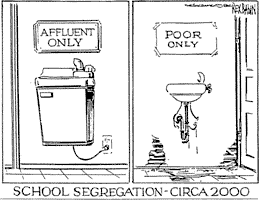It is a sad truth that U.S. history is enmeshed with
hate crimes. One can argue that the
pilgrims fled Europe and the hate felt towards them, and that turned into perpetrators of such hate by taking land from the
Native Americans, etc, until we get to what is often considered the resolute pinnacle of anti-hate legislation in the U.S.:
The 1969 Federal Hate Crimes Law.
Though the 1969 Federal Hate Crime Law was a huge step in the right direction, it was by no means the end of hate in the U.S. Unfortunately, crimes continued to be perpetrated under the monstrous mask of one group being superior to another, as is demonstrated by what happened to many victims, including
Matthew Shepherd and
James Byrd Jr.
Eleven years later, the
Matthew Shepherd and James Byrd Jr. Hate Crimes Prevention Act was signed into law by President Obama in 2009. The law had to be
piggy-backed on a defense spending bill in order to reach the president’s desk due to its extensive opposition.
The majority of those in
opposition to this bill came from the Republicans. Some Republicans claim they are opposed to the bill because they feel all hate crime laws favors some victims over others. Other Republicans claim they support the 1969 Federal Hate crime Law, which would then invalidate the previous argument, but do not support hate crime laws against traits that are “
immutable” Others feel hate-crime laws threaten freedom of speech.
The Matthew Shepherd and James Byrd Jr. Hate Crimes Prevention Act makes crimes committed against others due to their gender, gender identification, sexual orientation or disability, all hate crimes.
Time has yet to tell if the
Matthew Shepherd and James Byrd Jr. Hate Crimes Prevention Act will cause a decrease in hate crimes, including those against homosexuals, across the U.S. A subtext of this law requires the FBI to keep
statistics on hate crimes. This will help us understand what may decrease hate crimes in the future.
Looking at some of the FBI’s most recent statistics from
2009, I was surprised by the striking cliché of the numbers. Let me explain that these numbers are cliché in that they are against minority groups historically disliked; a dislike I naively believed we were done with as a society. Of the 4,000 racially motivated crimes, 2,900 were against African-Americans. Of the 1,500 crimes done to people of religion, 1,100 were done to Jewish people.
Perhaps our society uses prejudice to express a solidarity that is lacking in our heterogeneous population. This type of solidarity is solid like a tumor, and though at first it may seem to bring people together in the long run it will act as a cancer and eat holes in society. The FBI statistics reflect a trend that is not new or (I fear) possibly even dying out. It is not something that is influenced by popular trends but by deep-rooted fears feeding a deadly intolerance of the type that has toppled societies for centuries.















